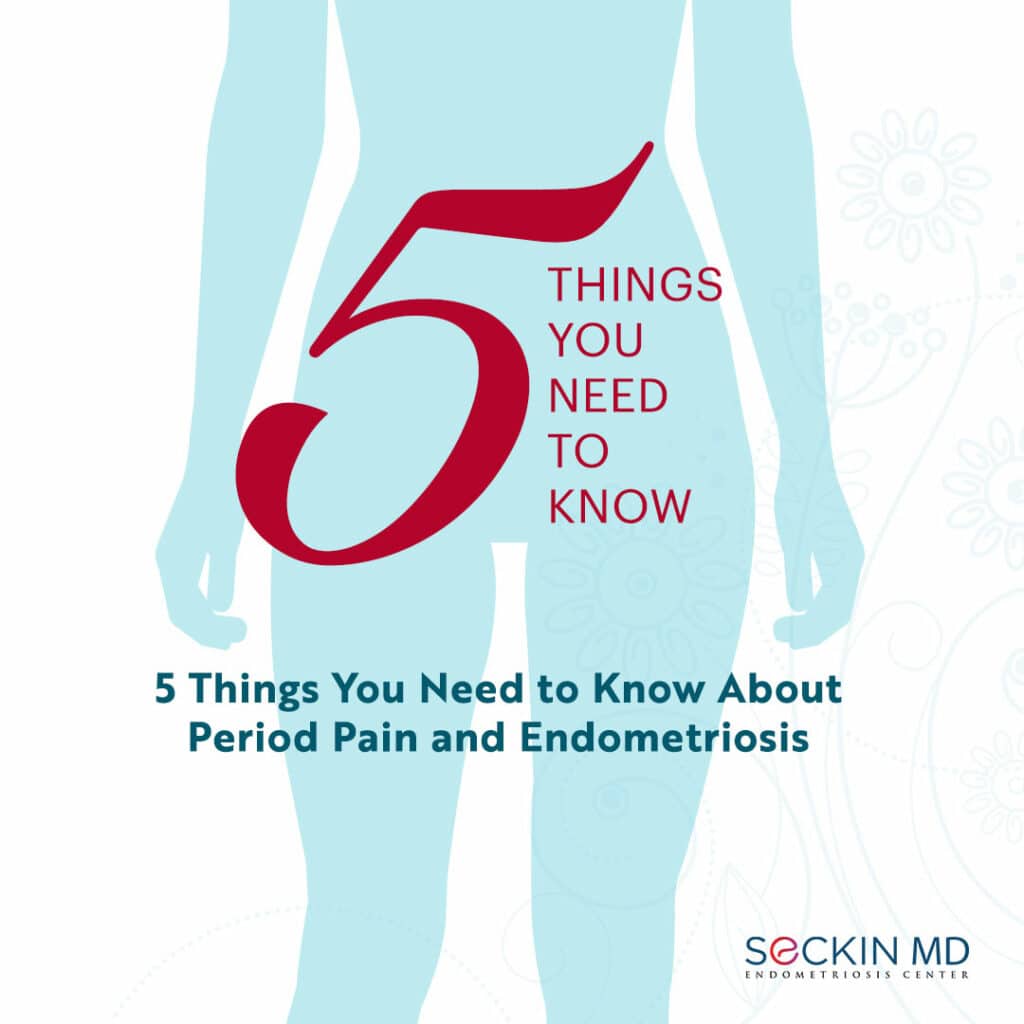5 Things You Need to Know About Period Pain and Endometriosis

One of the major challenges that endometriosis patients face is the lack of proper, concise information about various aspects of the disease. Here are 5 things you need to know about period pain and endometriosis so that you can help break the stigma and get the care you need and deserve.
1. There are two types of period pain
Period pain, also known as dysmenorrhea occurs in two forms: primary and secondary.
Primary dysmenorrhea is when period pain occurs without any particular medical reason and is normal. For example, this can be the pain when you first experience periods and can continue throughout life.
Secondary dysmenorrhea is period pain caused by a condition such as endometriosis. This can occur due to higher levels of prostaglandins, which is often the case in endometriosis. These prostaglandins constrict uterine blood vessels and cause the muscles to contract leading to painful cramps. Sometimes endometriosis lesions can directly put pressure on the nerves and cause pain. Dysmenorrhea due to endometriosis can be much stronger than primary dysmenorrhea.
2. Period pain should not be debilitating
Pain is a signal that your body is sending out ‘saying’ something is wrong. So you should never ignore it. Some amount of pain and cramping is normal during periods. However, debilitating pain or “killer” cramps require immediate attention and are not alright. It is important to consult your doctor if you experience anything more than mild pain, particularly if it is stopping you from living your normal life.
3. It is okay to talk about painful periods with family, friends, and colleagues
Women with endometriosis must become their own advocates in order to bring about change in perception about the myths surrounding endometriosis and to effectively disseminate proper knowledge about the disease. The first step in this process is to let family and friends know what you are going through, sensitize them about how you feel, and not hesitate to seek help.
Such advocacy is particularly necessary at college and at work. Personal stories that come out of such talks can inspire and motivate others suffering from the disease. Participating in events such as the UpEndo Citizen Advocacy is one of the many ways to make your voice heard.
4. The intensity of the pain does not always correlate with the severity of endometriosis
The original staging system to assess endometriosis does not take into account symptom severity. It is possible that you may be classified as having stage 1 endometriosis but may experience debilitating pain, which a stage 4 patient may not experience.
This is why Dr. Seckin prefers classifying endometriosis based on the extent of infiltration of lesions and their location as these directly correlate with symptom severity.
5. Secondary dysmenorrhea can have other causes too, so get yourself checked
Apart from endometriosis, conditions such as adenomyosis, fibroids, cervical stenosis, and infections can also cause secondary dysmenorrhea.
Adenomyosis is a “sister disease” of endometriosis but occurs within the uterus. Adenomyosis can also cause heavy menstrual bleeding in addition to secondary dysmenorrhea.
Fibroids are non-cancerous growths that occur within the uterus. Although they may sometimes not cause symptoms, larger fibroids can distort the uterine anatomy and make it difficult for you to get pregnant. Fibroids can also cause heavy menstrual bleeding in addition to secondary dysmenorrhea.
If the cause of secondary dysmenorrhea is endometriosis, laparoscopic deep excision surgery is the only gold standard treatment to alleviate symptoms. Laparoscopic deep excision surgery combined with our patented Aqua Blue ContrastTM visualization technique and cold excision can fully excise all lesions, scarring, and adhesions while preserving healthy tissue and thereby, fertility. Most fibroids can also be treated with laparoscopic surgery, depending on the size of the lesions. Adenomyosis, depending on its localization, can also possibly be treated laparoscopically. However, doctors decide this on a case-by-case basis.
Did you know these things about period pain and endometriosis? Please share your thoughts by leaving a comment on our post on Facebook or Instagram
Get a Second Opinion
Our endometriosis specialists are dedicated to providing patients with expert care. Whether you have been diagnosed or are looking to find a doctor, they are ready to help.Our office is located on 872 Fifth Avenue New York, NY 10065.
You may call us at (646) 960-3080 or have your case reviewed by clicking here.